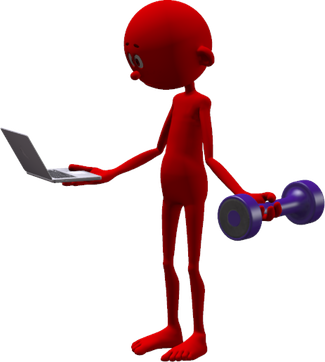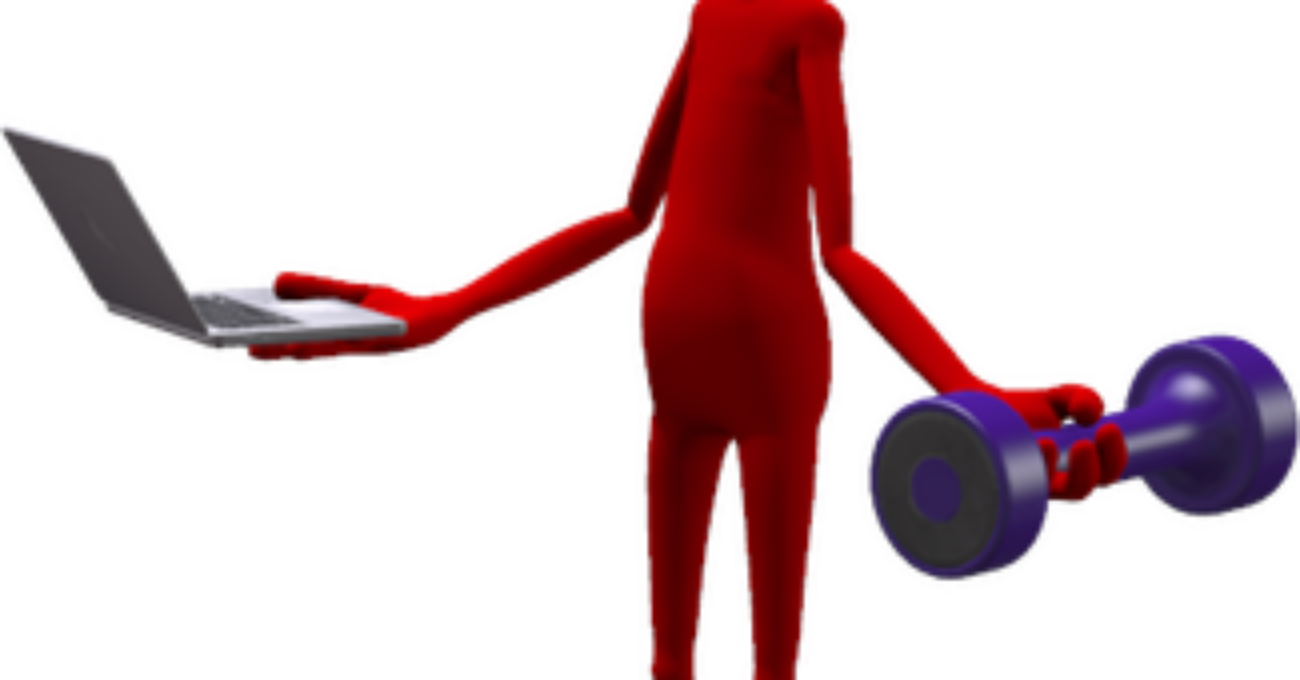Who do we trust?
1385 words; estimated reading time: 6 minutes, 55 seconds.
Reflecting on my recent blog on fitness trend and fads, I realised that it was, in reality, a superficial treatment of an important topic. The paper that I reviewed was effectively just a popularity survey and was short on critical thinking – something the 10th man seeks to promote!
Being critical
Critical evaluation is an important professional skill that deserves further exploration. After all, we have a constant stream of information coming at us, both as consumers and as exercise professionals. So many new ideas that sparkle, promise, and entice. New information that astonishes, enlightens, catastrophises, challenges and unsettles. It forces us to consider; ‘are we really doing our abdominal exercises the right way?’ Maybe that new gadget really does isolate transversus abdominis? What if I’m not eating the right foods, eating them in the correct order, sleeping correctly, or following the right exercise regimen? Even if you’re immune to the agitation of new information you can be sure that your clients are not!. How we respond to ‘the latest findings’ is, in my view, what distinguishes an exercise professional from an expert service provider (see that blog). So, the next two blogs set out to explore critical examination of information, and guide you through a personal research process.
Fake facts
Most information trumpeted as new and groundbreaking clearly isn’t either. ‘Alternative’ scientific facts have become so commonplace that many people routinely accept them as truth. While we are outraged by the alternate truths and misinformation that politicians try to ‘spin’, when it comes to alternate truths about exercise, diet (see the Turmeric blog) and health, the sheer volume of information is overwhelming and we barely notice or care about the discrepancies (Iammarino & O’Rourke, 2018). That just doesn’t seem right! It seems so inconsistent with being an ethical exercise professional. Iammarino & O’Rourke (2018) voice their strong ethical concerns about misinformation and contend that fake facts are ultimately detrimental to the health of both individuals and communities. In our exercise world, I think that fake facts often hijack individual’s well-intentioned attempts to be habitually physically active. It seems to me that our exercise profession deals poorly with new information. Too often we seem to turn a blind eye, when really we should be leading the way and taking more professional responsibility for ensuring information is accurate and truthful.
Professional decision making
As our domain of exercise involves human behaviours, our work is in many ways complex. Our professional roles would unlikely be very effective if we simply based our practice solely on facts and figures. Although David Carr (2010) was writing about teaching and not exercise professionals, I like what he had to say about professional practice. To paraphrase he suggested that …professional action is not the ‘right’ way to act in the sense that it has been proved to be correct. It is the ‘right’ way to do things because it is reasoned action that can be defended and justified as appropriate to the particular individual and their circumstances…. Given that a fundamental principle of science is that things are never really proved, when it comes to physical activity there can be no single ‘right’ answer. We know that for sure – just look at the contradictory suggestions for things like weight loss and muscle hypertrophy! Instead, we continue to ask questions and try to find plausible alternative solutions until they too are disproved. In that sense, our knowledge and understanding are cumulative, and constantly changing and self-correcting as we learn and experience more. Many times, new information finds you; you hear about it or read about it. At other times you will seek new solutions to professional questions, or you may be doing your due diligence (researching and establishing trustworthiness) in response to new information that you encounter. So you actively discover and explore the information. The point is, that whether new ideas are by chance discovery, or part of your research trail, some form of personal research should be embedded in your professional practice. I think we all do it; the question is ‘can we do it better’?

What’s your signature pedagogy?
How we identify ourselves as exercise professionals may influence how and where we look for information. Shulman (2005) would call this the ‘signature pedagogies’ of the profession. He claims that a signature pedagogy comes from how we were taught and acquired our knowledge, which in turn influences how we seek out further disciplinary knowledge. Some exercise professionals will identify hard as being ‘sports scientists’ and will approach their work from a techno-rational perspective. Others will identify as being first and foremost teachers and coaches and will approach their work from a practical and pedagogical point of view. Most of us are undoubtedly professional hybrids of some sort, but my experience is that we still often affiliate more strongly to one area or the other – we tend to have difficulty in leaving our signature pedagogies behind!‘Hard’ scientific research typically boasts of being quantitative and ‘objective’. That type of research, as you know, is often based on statistical research designs and favours a hierarchy of evidence, with randomised control studies (RCTs) leading the way. Such research has usually undergone peer review, meaning that experts have evaluated the research and endorsed the study design and findings. While the information will have good rigour, academics and career researchers usually seek answers to mechanistic questions that may have limited significance or practical relevance for professional practice. What I mean by this is that such studies will often depart from practice simply because there is a need to control as many research elements as possible. In practice, we are rarely able to control factors such as other exercise undertaken, diet, or sleep. In practice, we don’t randomise our clients to different programmes – instead we try to match each client to the programme that we believe will work best for them. So RCTs do not generally reflect contemporary practice.There is also the widely documented issue of publication bias. Reviews have shown that studies demonstrating positive outcomes are often favoured for publication, while those with negative results are more likely to be rejected. For example, if exercise interventions that demonstrated weight loss with exercise were the only ones published, and projects that demonstrated no change or weight gain were never published, then clearly our understanding of the efficacy of exercise for weight loss would be hugely distorted. There is a bias toward publishing positive results. This publication anomaly helps to explain why so many contradictions appear in research. No wonder coffee is considered bad for you one week and great for you the next!
So-called ‘soft’ science often uses qualitative research methods and is usually considered more subjective. Like quantitative research, qualitative research has limitations yet still yields valid understandings of real-life situations. Qualitative methods mean that the research will typically be authentic, culturally relevant, opinion-based, and based on the lived experiences of individuals. For professionals, qualitative studies can be just as valid and instructive. I find there is a lot of richness in qualitative research as this form of inquiry often accurately recognises the nuances of practice, and the challenges and obstacles that clients often face with their physical activity initiatives. As an exercise practitioner, it is just as important for me to know that some participants experience prolonged soreness and fatigue after a plyometric exercise session, as it is to know how many foot contacts are recommended for plyometric progressions. Science is great, but without understanding it can be problematic!
Hybrid research consumers
In our exercise field, whether it involves working with weight loss in the general population, helping somebody rehabilitate after a shoulder injury, or helping an athlete develop their repeated sprint ability, interventions will necessitate dealing with human behaviours, different phenotypes (physical characteristics), different genotypes (genetic characteristics) and different emotional dispositions. So while hard science is great, the pathway to successful outcomes will normally involve understanding individual contexts. So we often draw just as much on the ‘softer’ sciences. I think as competent exercise professionals we should be open to engaging in hybrid research; accepting different forms of research and using relevant bits from each to develop our solutions for practice.
Best, Phil
References
- Carr D. (2010) Personal and Professional Values in Teaching. In: Lovat T., Toomey R., Clement N. (eds) International Research Handbook on Values Education and Student Wellbeing. Springer, Dordrecht
- Iammarino, N.K., O’Rourke, T.W. (2018): The Challenge of Alternative Facts and the Rise of Misinformation in the Digital Age: Responsibilities and Opportunities for Health Promotion and Education, American Journal of Health Education, DOI: 10.1080/19325037.2018.1465864
- Lawson, H.A. (1984) Problem-Setting for Physical Education and Sport. Quest 36; 48-60.
- MacDonald, W. B. (Academic Skills Centre), Seel, J. (Library, both University of Toronto) Research Using the Internet https://advice.writing.utoronto.ca/researching/research-using-internet/ (Accessed 7 Feb 2019)
- Shulman, L.S. (2005) Signature Pedagogies in the Professions. Daedalus, On Professions & Professionals 134 (3): 52-59.
- Van Hooren, B. & Peake, J.M.(2018) Do We Need a Cool-Down After Exercise? A Narrative Review of the Psychophysiological Effects and the Effects on Performance, Injuries and the Long-Term Adaptive Response. Sports Med 48(7): 1575 -1595.
